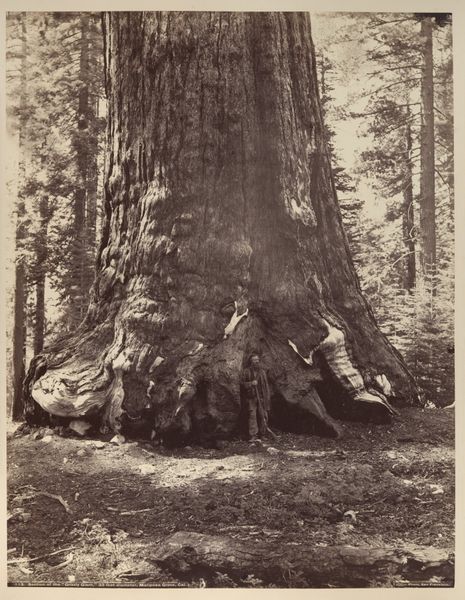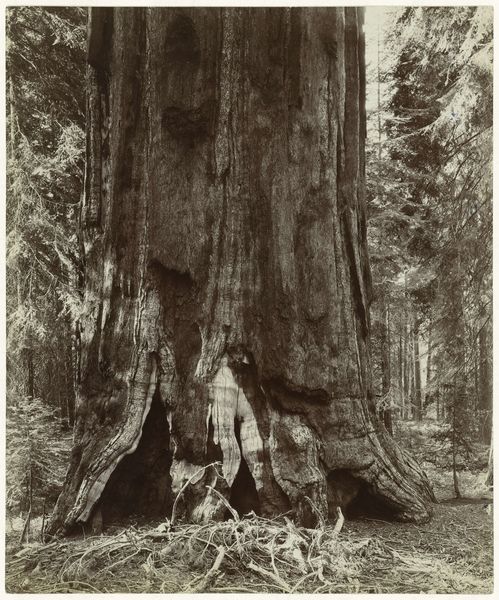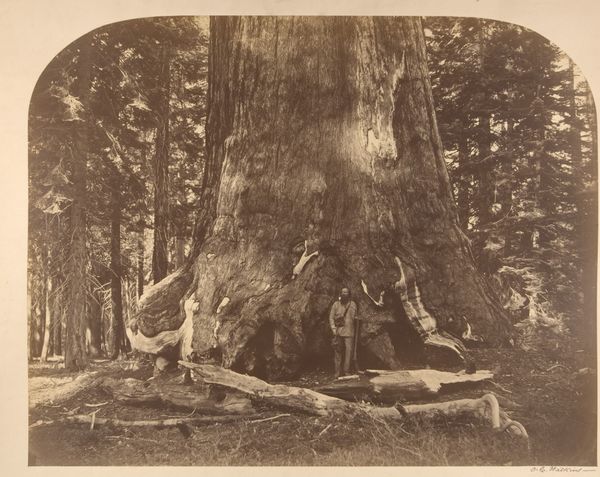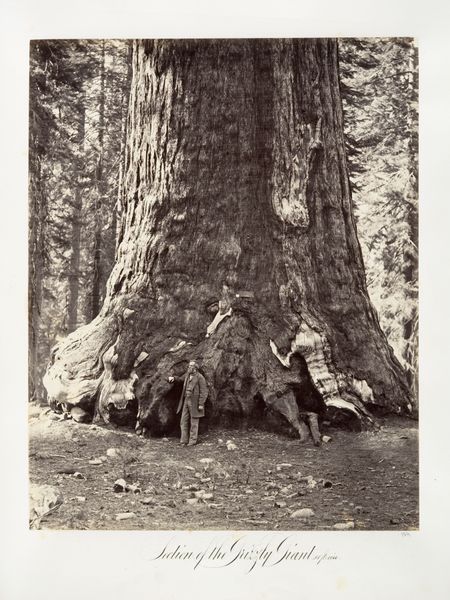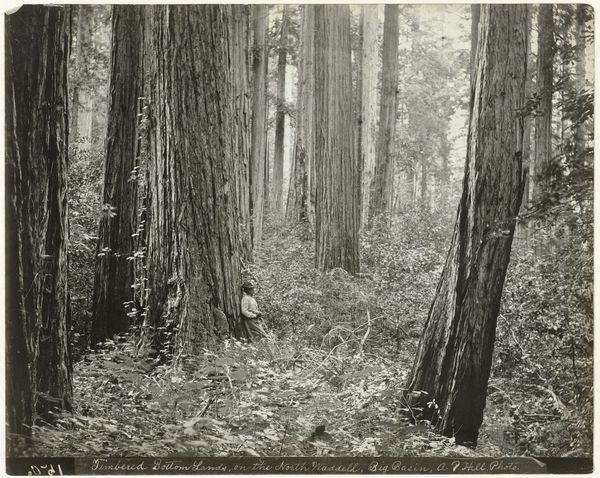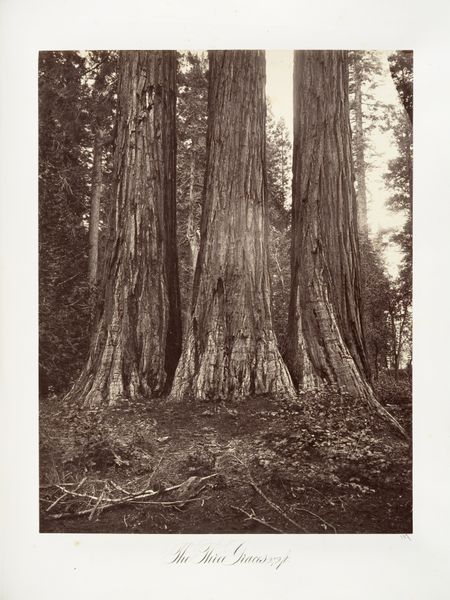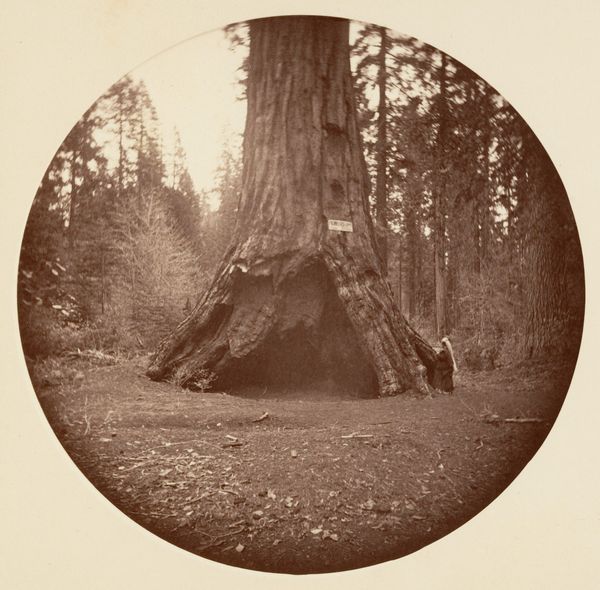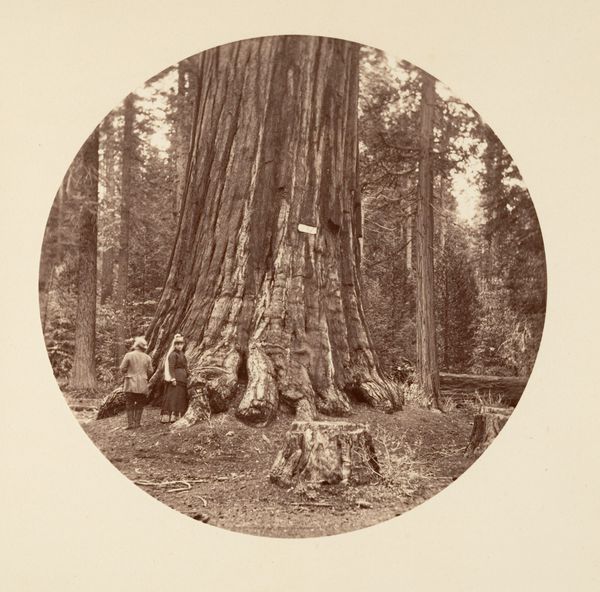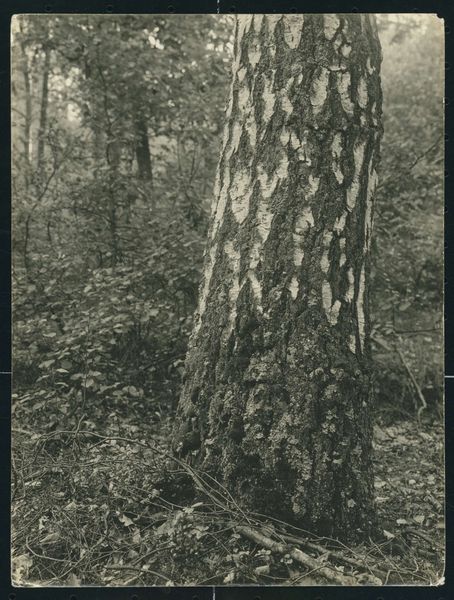
Man bij de stam van een reuzensequoia in Big Basin State Park in Californië 1900 - 1922
0:00
0:00
print, photography
#
tree
#
still-life-photography
#
natural shape and form
# print
#
countryside
#
organic shape
#
landscape
#
natural colouring
#
nature colouring
#
nature
#
photography
#
nature friendly
#
nature heavy
#
nature environment
#
naturalism
#
realism
#
shadow overcast
Dimensions: height 186 mm, width 231 mm
Copyright: Rijks Museum: Open Domain
Curator: The artwork we're examining today is a photograph entitled "Man bij de stam van een reuzensequoia in Big Basin State Park in Californië," taken sometime between 1900 and 1922. Editor: My immediate reaction is one of awe. The scale is just incredible. It's not just a tree; it's a living monument. Curator: Indeed. What makes this image fascinating from a historical perspective is the early conservation movement it hints at. Andrew P. Hill, the photographer, was also a key figure in the effort to preserve these redwood forests, Big Basin being California's first state park. Editor: Absolutely. Seeing the man standing at the base emphasizes both the majesty and vulnerability of these ancient beings. There is this sense of urgency. Curator: Yes, placing a figure within the frame highlights scale and offers viewers a sense of personal connection. Consider the history here. These images influenced public opinion and shaped policy in the early 20th century regarding environmental protection. Editor: But I can't help also feel some tension with the depiction of "nature" and the narrative of preservation it can invoke. Indigenous stewardship of this land predates state parks and legislation by millennia. Where is the recognition of that complex history in this frame? Curator: That’s a vital point. This photograph does participate in a particular framing, no pun intended, of how we understand and interact with nature, often excluding those narratives and perpetuating specific power structures. Editor: Right. This photographer's efforts were pivotal in the preservation movement. How are images like these used? Are they tools for genuine protection and conservation? Or are they complicit in more insidious displacement? Curator: These are critical questions to keep asking. Examining these historic artworks helps us unpack these histories. It pushes us to explore those narratives and their sociopolitical repercussions within today's environmental conversations. Editor: I'll definitely be looking at landscape photography through a more critical lens moving forward. Thanks! Curator: The pleasure was all mine.
Comments
No comments
Be the first to comment and join the conversation on the ultimate creative platform.
